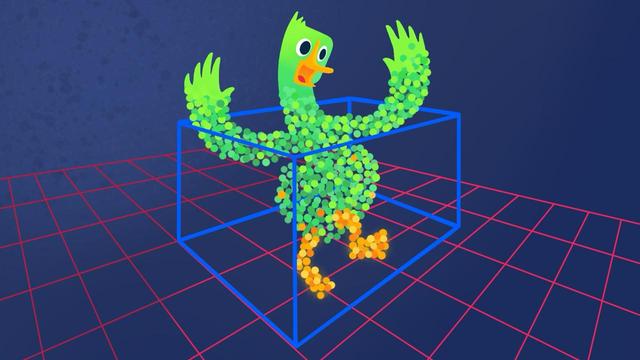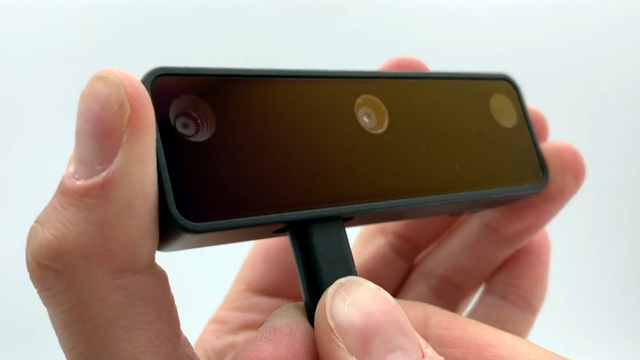OAK-D Depth Sensing AI Camera Gets Smaller and Lighter
The OAK-D is an open-source, full-color depth sensing camera with embedded AI capabilities, and there is now a crowdfunding campaign for a newer, lighter version called the OAK-D Lite. The new model does everything the previous one could do, combining machine vision with stereo depth sensing and an ability to run highly complex image processing tasks all on-board, freeing the host from any of the overhead involved.
An example of real-time feature tracking, now in 3D thanks to integrated depth sensing.
The OAK-D Lite camera is actually several elements together in one package: a full-color 4K camera, two greyscale cameras for stereo depth sensing, and onboard AI machine vision processing with Intel's Movidius Myriad X processor. Tying it all together is an open-source software platform called DepthAI that wraps the camera's functions and capabilities together into a unified whole.
The goal is to give embedded systems access to human-like visual perception in real-time, which at its core means detecting things, and identifying where they are in physical space. It does this with a combination of traditional machine vision functions (like edge detection and perspective correction), depth sensing, and the ability to plug in pre-trained convolutional neural network (CNN) models for complex tasks like object classification, pose estimation, or hand tracking in real-time.
So how is it used? Practically speaking, the OAK-D Lite is a USB device intended to be plugged into a host (running any OS), and the team has put a lot of work into making it as easy as possible. With the help of a downloadable application, the hardware can be up and running with examples in about half a minute. Integrating the device into other projects or products can be done [in Python with the help of the DepthAI SDK](https://docs.luxonis.com/projects/sdk/en/latest/getting_started/#cookbook), which provides functionality with minimal coding and configuration (and for more advanced users, there is also a [full API](https://docs.luxonis.com/projects/api/en/latest/#welcome-to-depthai-gen2-api-documentation) for low-level access). Since the vision processing is all done on-board, even a Raspberry Pi Zero can be used effectively as a host.
There's one more thing that improves the ease-of-use situation, and that's the fact that support for the OAK-D Lite (as well as the previous OAK-D) has been added to a software suite called the Cortic Edge Platform (CEP). CEP is a block-based visual coding system that runs on a Raspberry Pi, and is aimed at anyone who wants to rapidly prototype with AI tools in a primarily visual interface, providing yet another way to glue a project together.
Earlier this year we saw the OAK-D used in a system to visually identify weeds and estimate biomass in agriculture, and it's exciting to see a new model being released. If you're interested, the OAK-D Lite is available at a considerable discount during the Kickstarter campaign.
#crowdfunding #digitalcamerashacks #aicamera #depthcamera #movidius #myriadx #oakd #opencv #raspberrypi #smartcamera #stereovision

